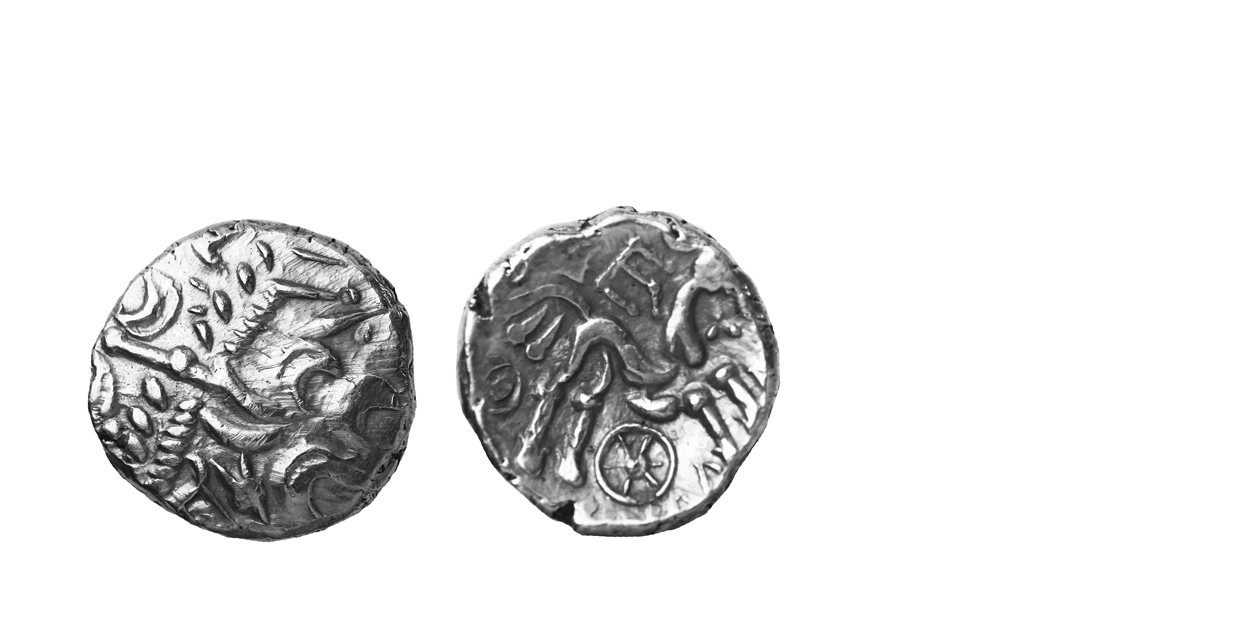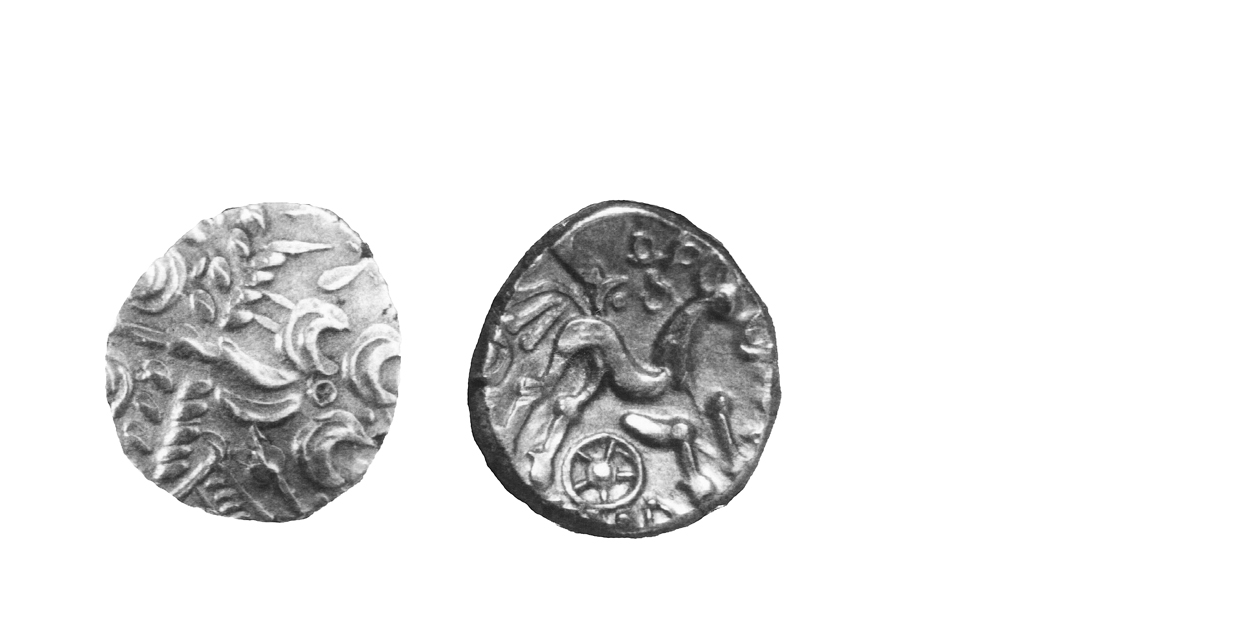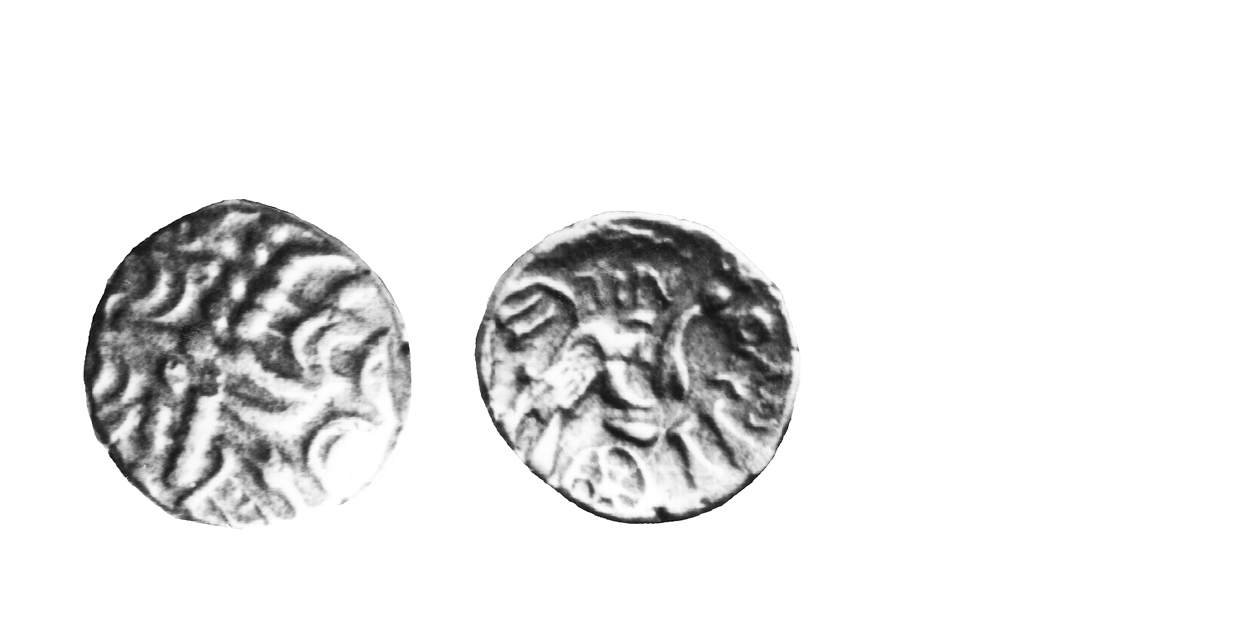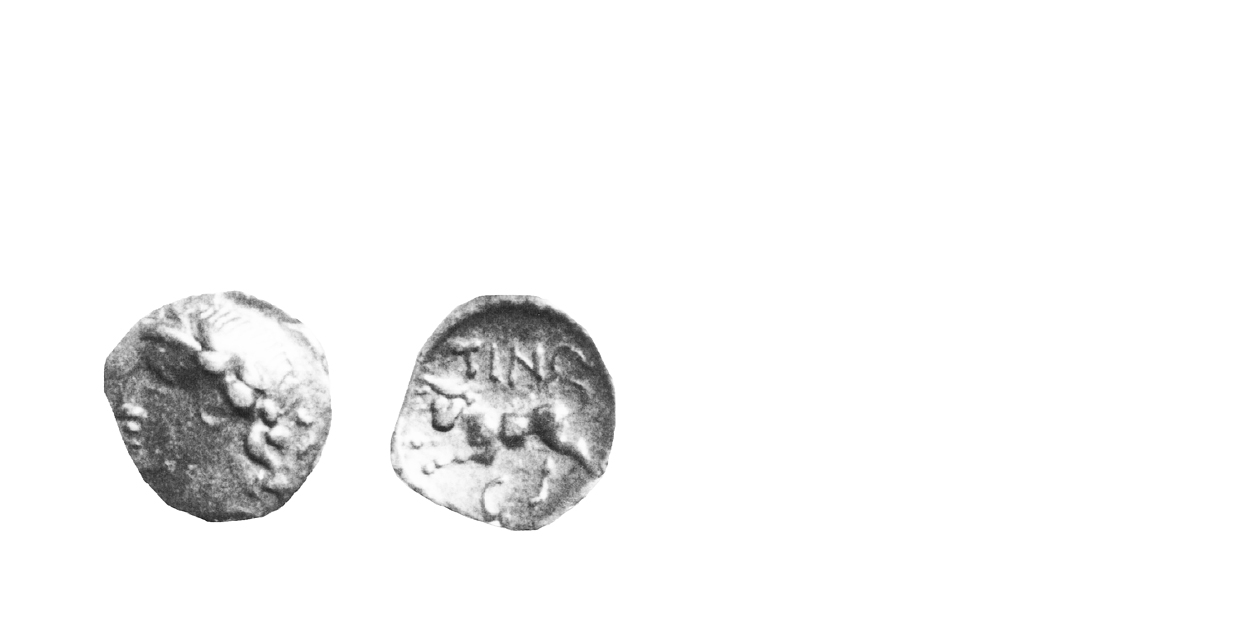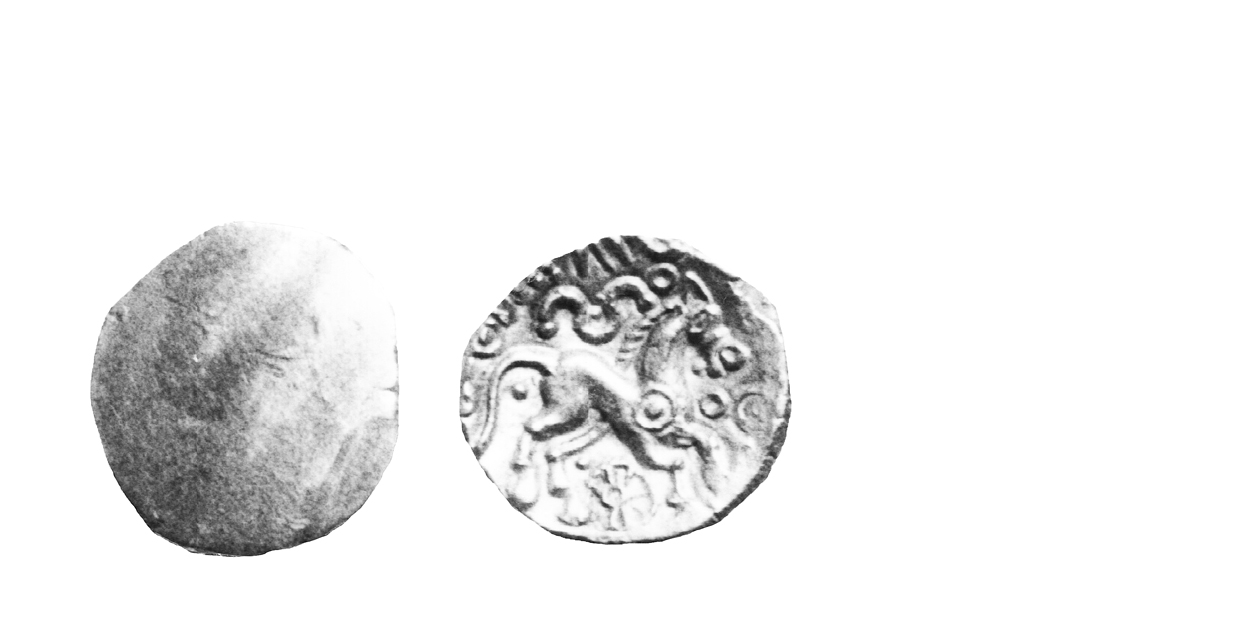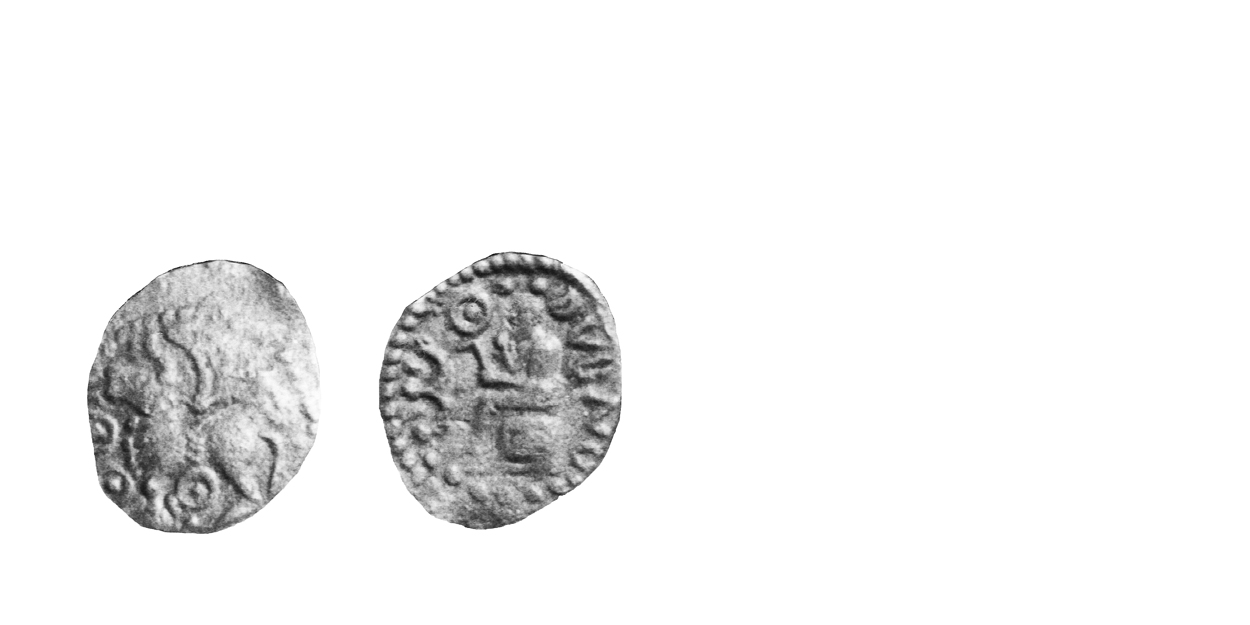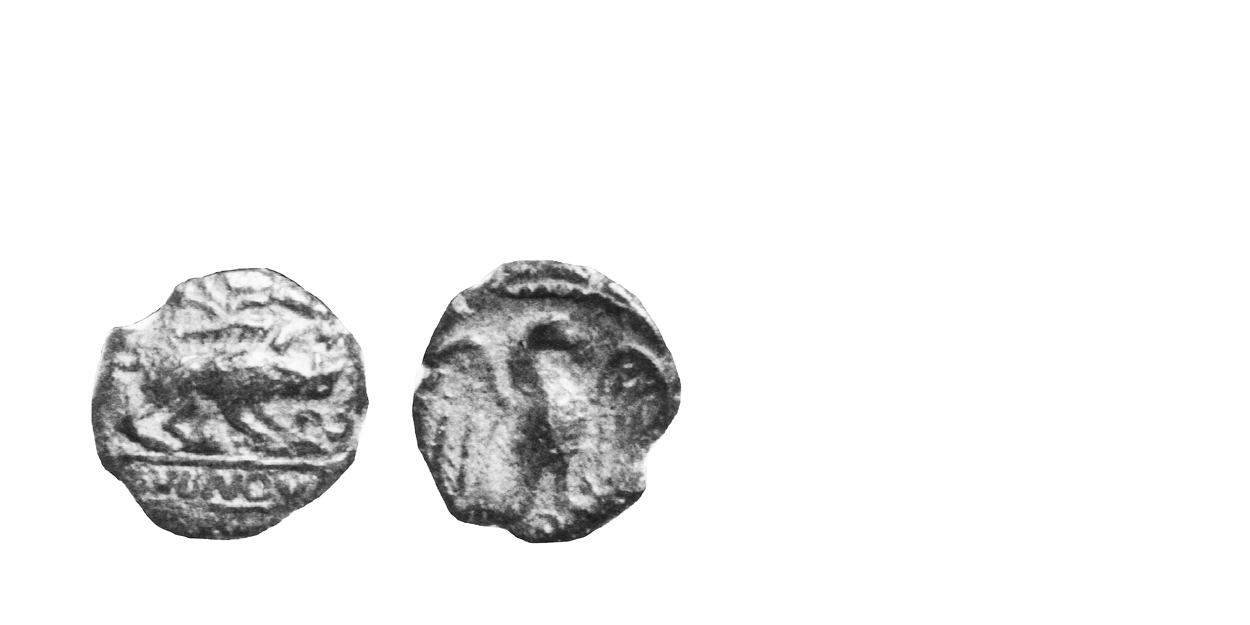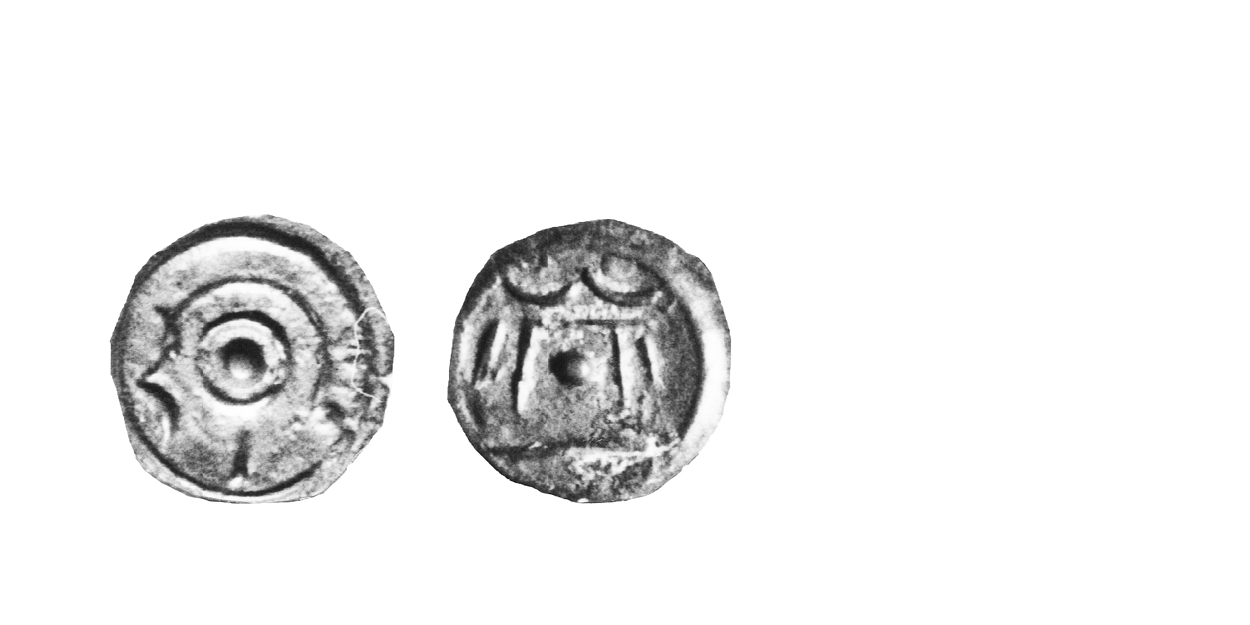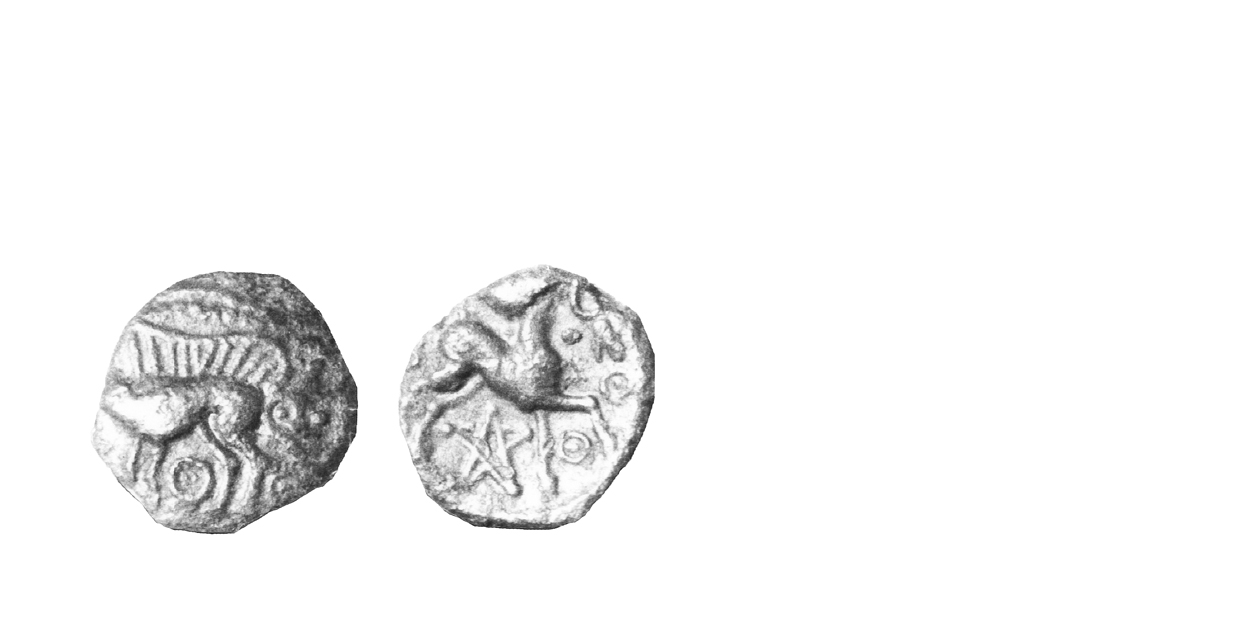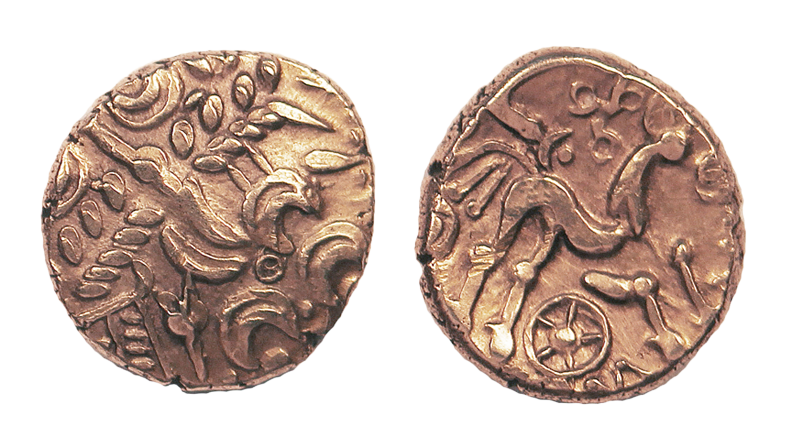
History
Early Dynastic Coinages (Info)
Coinage in the South Thames Region 30-10 B.C.
Atrebates/Regni/Belgae
The Atrebates/Regni/Belgae appear not to have benefited from Roman favour as the Trinovantes/Catuvellauni had. Although the Continental Atrebates had been Roman allies during the early stages of the Gallic War, they must have suffered the Romans' wrath when Commius deserted Caesar and joined Vercingetorix towards the end. Commius' flight to Britain to join the British Atrebates after the battle of Alesia would have thrown them into disfavour with the Romans as well. The tribe's coinage is not very prolific in the period after the War, suggesting they did not share in the wealth from the cross-Channel trade.
The meagre coinage of Commius ended about 35 B.C., replaced by that of Tincomarus, who styled himself "son of Commius". Tincomarus' coinage had three separate issues, distinguished by the images on the staters. It appears to have been a smaller coinage than that of his contemporary, Tasciovanus, and it exhibited a narrower range of types. Tasciovanus struck more than twice the number of varieties and prior to the Wanborough hoard, his coins were much commoner. The Wanborough hoard has distorted our estimate of Tincomarus' output by making his coins common today (68).
Tincomarus' coinage was made up entirely of gold and silver, with no bronze coins whatsoever. The coins are found almost entirely within Atrebatic/Regnan/Belgic territory. Evidently, the tribe did not enjoy the economic hegemony over their neighbours, the Cantii, that the Trinovantes/Catuvellauni had over the Iceni.
Two attempts have been made to disentangle the coinage of the Atrebates/Regni/Belgae. During the 1990's, Simon Bean analyzed the coins in great detail (136) and attempted to demonstrate that several mints operated in the region. He also suggested that the coin listings could be rearranged to some degree. In the late 1990's and early 2000's Chris Rudd attempted to popularize the idea that the Belgae issued a separate coinage. He used finds of over 65 new coin-types, many discovered after 1994, to support his conclusions (137).
Cantii
The Cantii continued to issue coins of their own, introducing inscribed types about 30 B.C. in the name Dubnovellaunus. They thus showed no particular concern for interference from the Atrebates/Regni/Belgae, their neighbours to the west. Though it cannot be proven, Dubnovellaunus-in-Kent was probably a different ruler from the contemporary Trinovantian/Catuvellaunian one of the same name (69). The coins of the two were completely different in style and those of the Cantii were issued for a longer period. Philip de Jersey has attempted to disentangle the Essex and Kentish coinages inscribed Dubnovellaunus (138).
Dubnovellaunus-in-Kent struck three coinages in gold, silver and bronze, all privy-marked (70). He, or his predecessor, was probably responsible for the replacement of the Kentish Cast Bronze coinage with a series of struck bronzes. His coins circulated largely within Kent, judging from modern finds, underscoring the lack of interaction between the Cantii and the Atrebates/Regni/Belgae.
However, Cantian coins occasionally circulated in southern Essex because a small number have been found there (71). Similarly, the coins of the Trinovantes/Catuvellauni circulated in Kent to a degree. The economic influence the Trinovantes/Catuvellauni enjoyed over the Iceni was being carefully extended to Kent during the reign of Tasciovanus.
Next section – Early Dynastic Coinages – Peripheral Region

